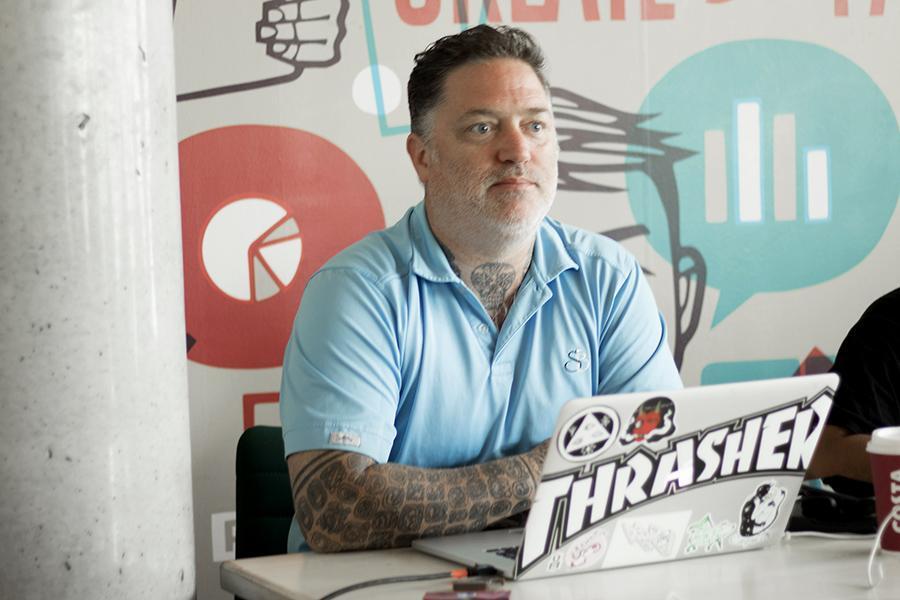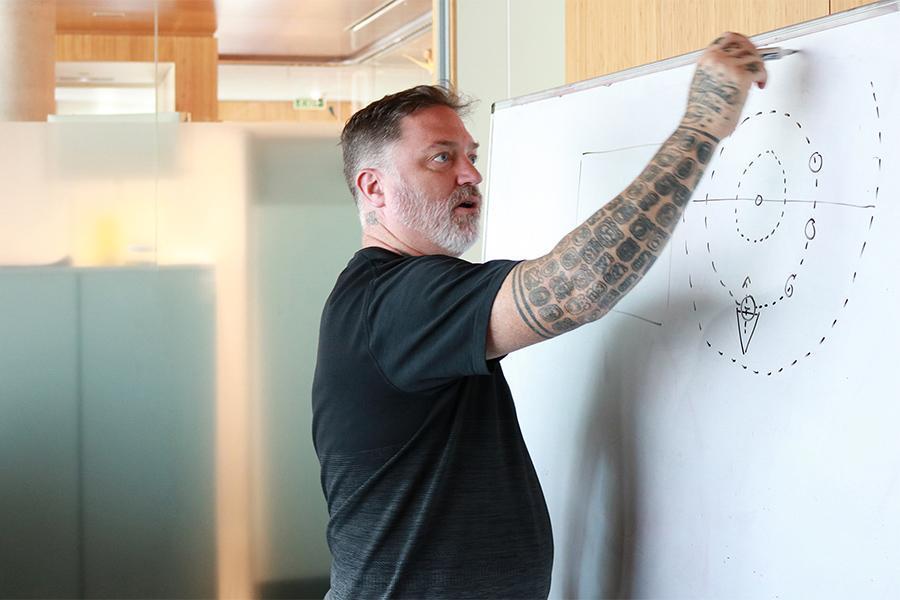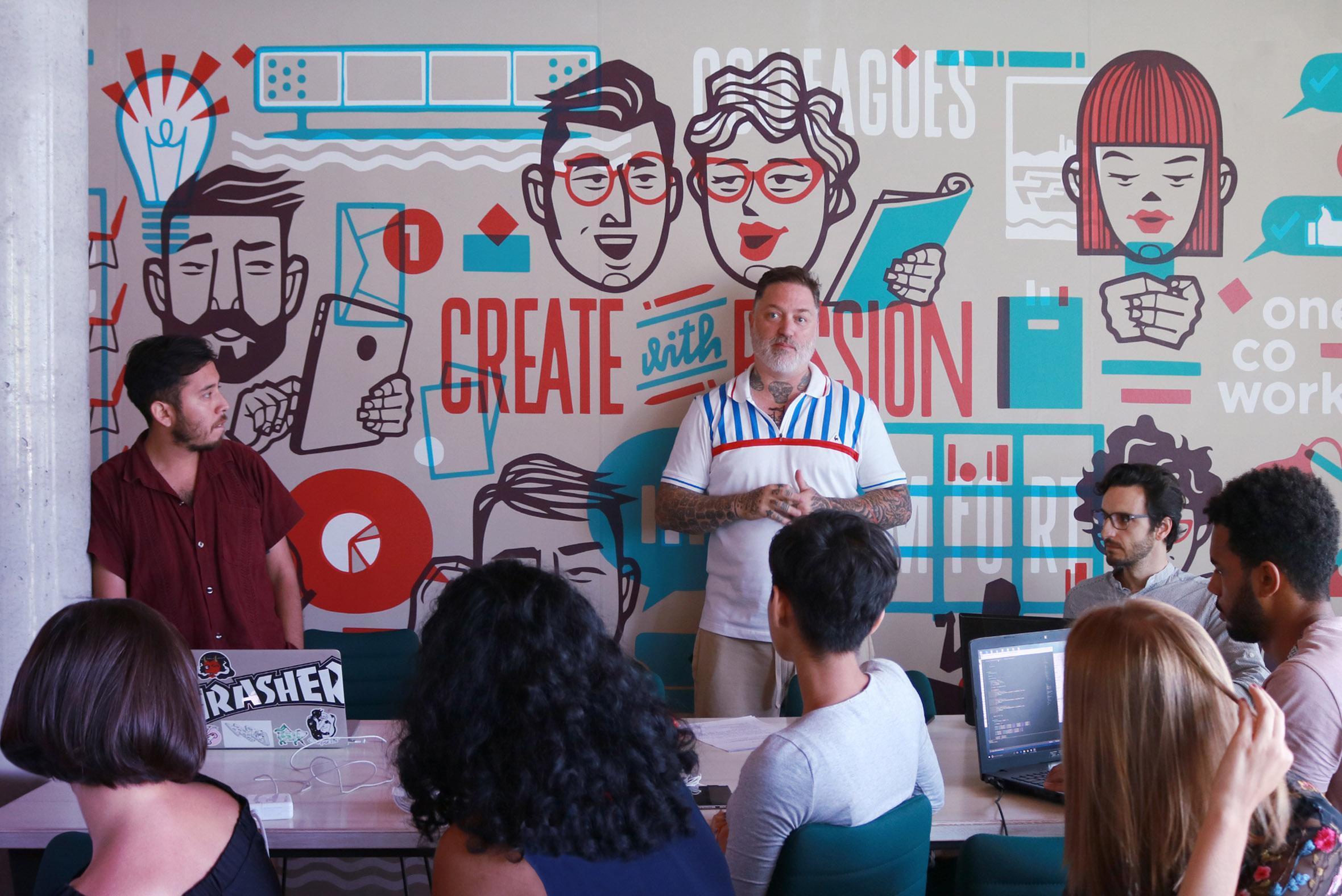Painting With Sound
Joshua Davis is an award-winning designer, technologist and artist in media based in New York. Joshua’s work has been exhibited at many world-famous museums such as the Tate Modern (London), MoMA (New York), the Smithsonian’s Cooper-Hewitt and more. He is also acclaimed for his role in designing the visualization of IBM’s Watson, the intelligent computer program capable of answering questions, for the quiz show Jeopardy.


Writer at Harbour.Space University
Joshua Davis is an award-winning designer, technologist and artist in media based in New York. Joshua’s work has been exhibited at many world-famous museums such as the Tate Modern (London), MoMA (New York), the Smithsonian’s Cooper-Hewitt and more. He is also acclaimed for his role in designing the visualization of IBM’s Watson, the intelligent computer program capable of answering questions, for the quiz show Jeopardy.

His previous website for exhibiting new artworks, praystation.com, was one of the first to offer open-source files available for anyone to download. Joshua Davis currently maintains an open source library for processing, HYPE framework , to create his visual works.

HYPE Framework
Joshua Davis’s work method is through coding. He uses various hardware and software to create algorithmic image making & animation. He has developed a library called HYPE Framework to use within Processing. Processing is a software and a language that allows you to code easily within the context of the visual arts. The HYPE Framework library allows you to create animated and interactive art pieces that perform heavy lifting tasks with minimal amount of code writing.
‘Painting with Sound’ at Harbour.Space
Joshua came to give a class at Harbour.Space on July 2017. His class was aimed to teach students programming that uses sound as an input to create artwork. His class exposed students to a completely different method to create art.
During the course, we learned how to create interactive visual patterns and animations with basic coding. While the goal of the course was to create visual installations reacting to sound, some of the projects have also been implemented to different mediums such as print and business cards.

Projects by Students
Thanks for reading
If you’re interested in further growth, take a look at our website to learn what your future could look like at Harbour.Space. Lastly, get in touch with us at hello@harbour.space to let us know your thoughts!
